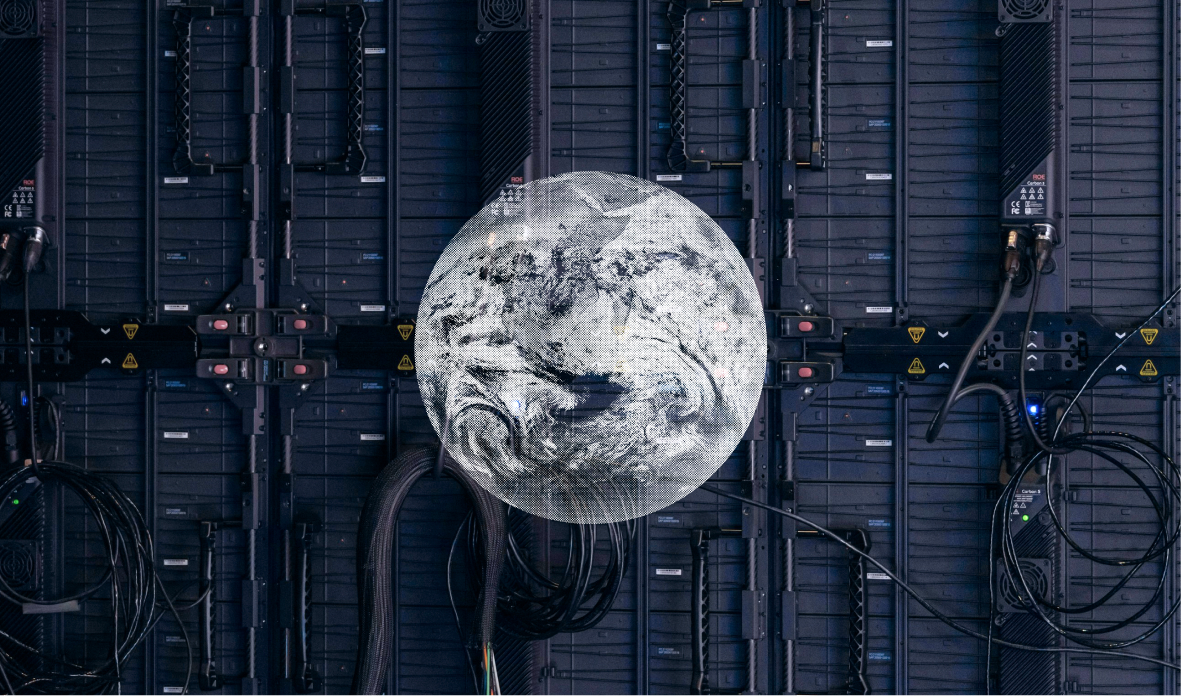Commons' Guide to the Carbon Economy

Join the community





What is carbon?
Carbon is an element that’s found in all forms of life. There is a natural balance of carbon stored in plants, animals, oceans, and the atmosphere, but we’ve disrupted that carbon cycle. Humans have extracted too much carbon from the Earth and released it into the atmosphere, disturbing a natural balance. To manage the climate crisis, we need to restore that carbon balance. We do that by releasing less carbon into the atmosphere and storing more in organic matter.
What is the carbon economy?
When we think about the economy, we think about humans’ production and consumption of goods and services, predominantly as it relates to finances. The carbon economy is a way to understand and quantify our impact on the planet through our production and consumption of carbon.
Carbon emissions are the shadow currency of our economy. In addition to monetary cost, each of our transactions has a carbon cost. The carbon cost of all our economic activity is what we call the carbon economy.
What are carbon emissions?
Carbon dioxide (CO2) is created in various ways, like organisms decomposing or carbon burning. Carbon dioxide is a type of greenhouse gas (GHG), but there are other emissions that have warming effects on our planet, including methane and nitrous oxide. Carbon dioxide is the most abundant greenhouse gas, so “carbon emissions” is often used as shorthand for greenhouse gas emissions, and you’ll often see measurements of these gases converted into carbon dioxide equivalents (CO2e).
At the current rate humans burn fossil fuels, we’re adding CO2e into the atmosphere faster than the natural world can absorb it. Scientists agree that 350 ppm* (parts per million) represents the safe level of carbon dioxide in the atmosphere, but we blazed past those levels in 1988. As of 2021, we are now at 416 ppm — levels that are unprecedented in the last 800,000 years.
* How the World Passed a Carbon Threshold and Why It Matters - Yale E360
What is global warming?
Global warming is the term often used to describe the rise in global average temperature, but some scientists say global heating is more accurate.
The global temperature has been rising for the past century due to unprecedented levels of CO2e emissions that humans have released into the atmosphere, most of them derived from fossil fuels.
This carbon buildup has already warmed the planet by 1.2ºC, compared to pre-industrial levels. That number may seem small, but its effects are drastic, causing deadly climate disasters and with devastation to communities and environments. To prevent worst-case scenarios and preserve a livable future for all of us, we need to rebalance our carbon cycle.

EPA: Atmospheric Concentrations of Greenhouse Gasses
What do fossil fuels have to do with carbon emissions?
Fossil fuels (oil, natural gas, and coal) are the concentrated remains of plants and animals from millions of years ago. As they decomposed, the carbon and other elements left behind turned into oil, gas, and coal. We call these fossil fuels, and when we burn them, we release that millenia-old carbon back into the atmosphere.
How can I shape the carbon economy?
We're always shaping the carbon economy with how we engage in the world through our daily activities, communities, and work. These carbon activities are broken into six carbon economy systems that we can influence with our spending.
.png)
(1) Utilities
$2 trillion | Influences 20% of global emissions
Decarbonizing the electricity we use at home is a huge opportunity for climate impact. Globally, 80% of energy is generated using fossil fuels. To meet our climate goals, about two-thirds of the world's electricity needs to be renewable by 2030.
(2) Offsets
$2 billion | Influences 1% of global emissions
Offsetting is a way to compensate for the emissions we can’t avoid by funding projects that absorb existing emissions or avoid new ones. Offset projects can also restore ecosystems and communities.
(3) Food & drink
$6 trillion | Influences 21% of global emissions
Transforming our food and farming systems is a major opportunity for impact. Curating what and how we eat advocates for food systems that nurture the planet instead of depleting it.
(4) Finance
$25 trillion | Influences 6% of global emissions
Financial institutions like banks leave a large footprint by investing in fossil fuels. Divesting from dirty energy is a way to invest in our future.
(5) Goods & Services
$18 trillion | Influences 15% of global emissions
All of our purchases — from shoes to streaming services — require energy and resources to produce. Shopping more sustainably saves money and cuts carbon.
(6) Travel
$9 trillion | Influences 11% of global emissions
Exploring our planet helps us appreciate all that’s worth protecting. We can honor Earth by embracing more conscious modes of transportation.
What is carbon intuition?
You’ve already built an instinct for the financial economy. For example, you have an idea of how much money you need for a gallon of milk or a gallon of gas.
Commons helps you cultivate your carbon intuition to understand the carbon equivalent of your habits and purchases. When you see the carbon emissions of a cross-country flight versus a beef burger, you can start to understand the cost your purchases using Earth’s currency — carbon. Look for your higher-emission purchases to see where to focus your climate practice and how to reduce emissions.
What is a carbon footprint?
Carbon footprints are an estimation of all the emissions that come from the products, services, and energy that that is used by a person, organization, or activity. Footprints are measured in kilograms of carbon dioxide equivalent (kg CO2e).
Carbon footprints calculate the emissions associated with an activity from production to final use. Our personal footprints include direct and indirect emissions. Direct emissions are ones that we have direct control over, like our home energy use. Indirect emissions account for the energy and resources used to make a product or service we consume. For example, the power and resources used to make a t-shirt.
Carbon footprints evolved from research on ecological footprints done by Dr. William Rees and Mathis Wackernagel at the University of British Columbia.
Read the complicated history of the carbon footprint →
Is it individuals’ responsibility to lower emissions?
Companies and governments influence 100% of global emissions. To build a low-carbon economy, we need bold corporate action and sweeping legislation.
But entrenched power and systems don’t change on their own. Individuals have agency when we organize and act collectively. We have a responsibility to use our economic and political voices to hold industries and governments accountable, and the opportunity to build sustainable and climate resilient communities from the ground up.
As consumers, we influence over 65% of global greenhouse gas emissions (Ivanova et al., 2016). And research shows that an average person can reduce their emissions by 5-25%, especially if they receive real-time information on their carbon footprint (Jones and Kammen, 2011) (Moran et al, 2018).
What does it mean to be climate neutral?
Climate neutrality is the state of balancing the amount of emissions released with the mount of emissions absorbed. Typically, going climate neutral means that you’re providing enough funds to climate projects for them to offset the amount of emissions you create.













